In a world where accidents can happen faster than you can say “Oops,” public and product liability insurance becomes your safety net. Imagine a scenario where a customer trips over a rogue banana peel in your store—suddenly, you’re not just selling products; you’re facing a potential lawsuit. This insurance isn’t just a safety blanket; it’s your superhero cape, ready to swoop in and save the day when things go hilariously wrong.
But let’s face it, navigating the world of insurance can feel like deciphering hieroglyphics while blindfolded. Public and product liability insurance protects businesses from claims of negligence, ensuring that a slip-up doesn’t lead to a financial freefall. With the right coverage, businesses can focus on what they do best—serving customers and making money—while leaving the worry to the insurance experts.
Table of Contents
ToggleUnderstanding Public & Product Liability Insurance
Public and product liability insurance provides essential protection for businesses against claims of negligence. This coverage safeguards against financial loss stemming from accidents involving third parties or product-related incidents.
Definition and Importance
Public liability insurance protects businesses from claims that arise when a third party suffers injury or property damage due to the business’s activities. Examples include slip and fall accidents at a business premises or damages caused during an event. Product liability insurance, on the other hand, shields businesses from claims related to defective or harmful products. In instances where a customer sustains injury or property damage after using a product, this insurance provides financial support. Both types of insurance prove vital for maintaining operations and financial stability by mitigating risks associated with unforeseen events.
Key Differences Between Public and Product Liability
Public liability insurance covers incidents occurring on business premises or during business operations impacting third parties. Scenarios include customers slipping in a store or injuries during a corporate event. Product liability insurance targets products sold or supplied by the business, dealing with defects or deficiencies causing harm. Distinctly, public liability focuses on location-based incidents while product liability concentrates on the product’s safety. Understanding these differences enables businesses to select appropriate coverage tailored to their specific needs, ensuring comprehensive risk management.
Coverage Offered by Public & Product Liability Insurance


Public and product liability insurance provides essential financial protection for businesses against various claims. Coverage includes incidents that occur both on business premises and from products sold to customers.
Types of Incidents Covered
Public liability insurance covers events like slips, trips, and falls that happen on a business’s premises. It also addresses incidents involving injury or property damage due to activities conducted by the business. Meanwhile, product liability insurance protects against claims related to defective or harmful products. Injuries caused by faulty products or damages stemming from product use also fall under this umbrella. Businesses benefit by safeguarding their financial interests and ensuring customer trust through responsible practices.
Exclusions to Consider
Certain exclusions exist within public and product liability insurance that businesses must consider. Damage caused by intentional actions or criminal behavior isn’t typically covered. Likewise, employee injuries fall under workers’ compensation and are not included in liability policies. Additionally, businesses may find that claims related to professional services are excluded, requiring separate professional indemnity insurance. Understanding these exclusions allows businesses to make informed decisions about their insurance coverage, ensuring comprehensive protection against potential risks.
Factors Influencing the Cost of Public & Product Liability Insurance
Several elements affect the cost of public and product liability insurance. Understanding these factors helps businesses make informed decisions regarding their coverage.
Business Type and Size
Business type significantly impacts insurance costs. Larger businesses typically face higher premiums, as they deal with more customers and higher transaction volumes. Companies in higher-risk sectors, such as construction or food service, generally pay more due to the increased likelihood of claims. Distinct industries, like manufacturing or retail, experience varying risks based on their operations. Choices about coverage limits and deductibles also influence premiums. High-risk businesses might require more comprehensive policies for enhanced protection, resulting in elevated costs.
Location and Industry Risks
Location plays a crucial role in determining insurance costs. Businesses located in urban areas often encounter higher rates due to increased foot traffic and greater accident risks. Regional regulations and legal environments can also affect premium expenses. Certain industries, like healthcare or transportation, have inherent liabilities that lead to steeper costs. The presence of local demographics, crime rates, and environmental factors contribute further to risk assessments. By evaluating these factors, businesses can better understand their potential insurance expenses.
How to Choose the Right Policy
Choosing the right public and product liability insurance policy requires careful consideration of specific needs and reliable providers. Assessing coverage and evaluating potential insurers helps ensure adequate protection.
Assessing Your Coverage Needs
Identifying risks associated with business operations is crucial. Determine potential scenarios that could lead to claims, such as customer injuries or product defects. Businesses need to analyze historical data on incidents similar to their operations. Understanding the size of the business assists in quantifying necessary coverage limits. For instance, a small retail store may not require the same coverage as a large manufacturer. Prioritizing these factors can lead businesses to a tailored insurance plan that adequately addresses their unique exposure.
Evaluating Insurance Providers
Researching potential insurance providers is essential. Verify their financial stability through independent rating agencies. Look for positive reviews from businesses in similar industries to gauge customer satisfaction. Comparing quotes from multiple insurers provides insight into coverage options and pricing. Prioritize companies known for responsive customer service, especially during claims processing. Investigating policy terms and exclusions ensures clarity about what is and isn’t covered. A well-informed choice leads to peace of mind and better financial security.
Public and product liability insurance serves as an essential safeguard for businesses navigating potential risks. By securing the right coverage, companies can focus on growth and operations without the looming threat of financial loss from unforeseen incidents.
Understanding the nuances between public and product liability insurance allows businesses to tailor their policies to better fit their unique needs. With informed decisions based on risk assessment and thorough evaluation of insurance providers, businesses can achieve peace of mind.
Ultimately, investing in comprehensive liability insurance is not just a precaution; it’s a strategic move that ensures long-term stability and success in an unpredictable marketplace.





